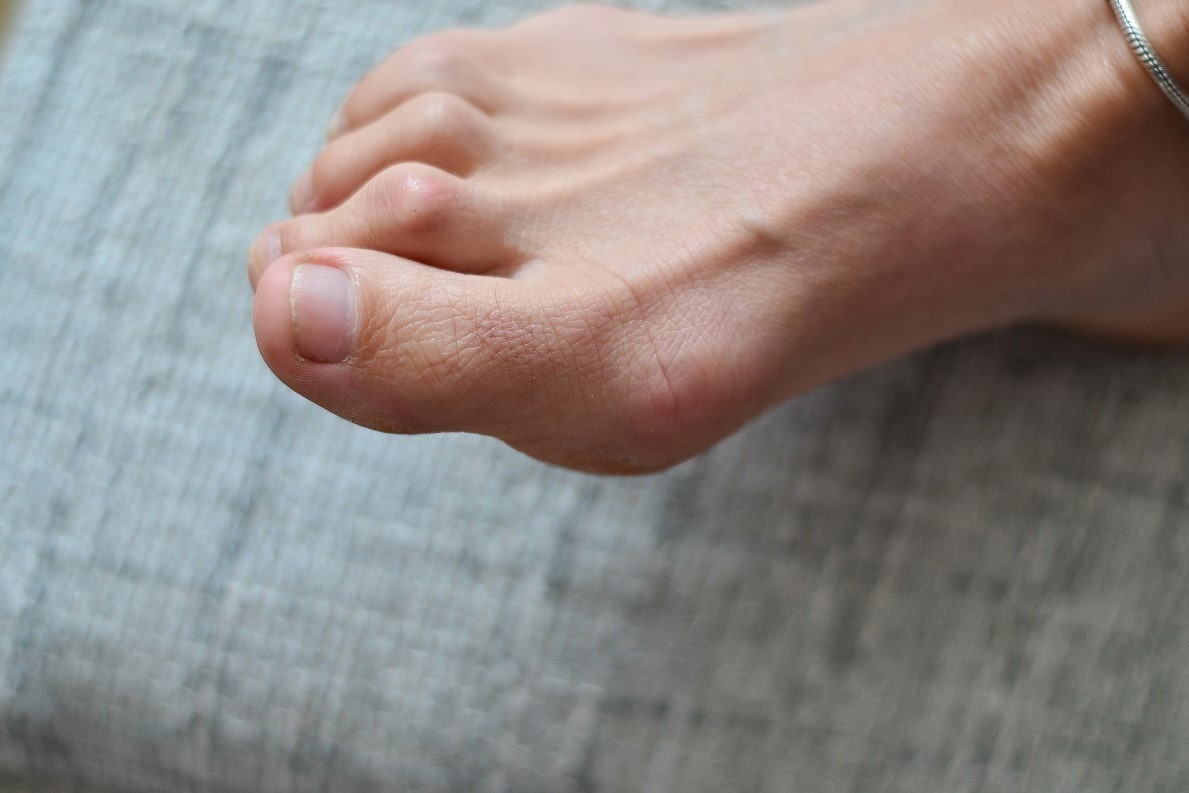
Hammerfinger: what is it?
The disorder known as ‘hammertoe’ affects indiscriminately the extremities of the lower or upper limbs and consists of a deformity of the fingers that take on a bent, curved, ‘Z’-shaped appearance near the terminal interphalangeal joint
The deformity, which may affect one finger or several fingers at the same time, may be rigid and already calcified or not yet structured and reducible by hand.
At the level of the hand, hammertoe deformity is mainly found at the level of the index and middle fingers. With regard to the foot, on the other hand, the deformity mainly involves the second, third and fourth toe.
Hammertoe: what causes it and who suffers from it
The causes of hammertoe deformity of the fingers and toes can be found in the misalignment of the joint surfaces, which can be caused by a genetic predisposition, biomechanical abnormalities or, again, retractions at the tendon level, often caused by traumatic events.
Hammertoe can be associated with the following pathologies:
Hallux valgus
Hallux valgus – vulgarly known as ‘onion’ – is a deformity affecting the first toe, the big toe, which causes it to deviate inwards towards the other toes.
This not only causes a prominence of the medial portion of the head of the first metatarsal bone, but also generates pressure against the other four toes, causing them problems with positioning and eventual deformity.
Rheumatoid arthritis
Rheumatoid arthritis is a chronic systemic disease mainly involving the joints.
It is an autoimmune inflammatory disease, which means that the immune system activates an abnormal response and develops an inflammatory reaction that manifests itself predominantly in joint damage.
Bursitis
Bursitis is an acute or chronic inflammation of the bursa serosa – sacs or cavities containing synovial fluid – of a joint.
They are usually due to trauma, excessive strain, bacterial or viral infections, inflammatory diseases or rheumatic diseases.
Dupuytren’s disease
Dupuytren’s disease affects the hand and is characterised by the progressive retraction of the palmar aponeurosis, the fibrous tissue located between the palm and flexor tendons.
Its stiffening and retraction can cause loss of limb function due to the inability to extend one or more fingers.
Hollow foot
The ‘hollow foot’ is a malformation caused by excessive concavity of the plantar arch that can be either congenital or acquired as a result of neurological pathologies, rheumatic disorders and trauma.
De Quervain’s syndrome
De Quervain’s syndrome consists of a chronic inflammatory condition affecting the tendons of the abductor longus and extensor shortus muscles of the thumb.
It is a form of tenosynovitis that involves a narrowing of the sheath covering the tendons, which become irritated and inflamed due to excessive rubbing.
The symptoms of hammertoe
If it affects the joints of the upper limbs, the pain caused by the deformity can prevent even the normal performance of daily activities – washing, dressing, preparing food – becoming a potentially significant factor that reduces the patient’s quality of life, especially if it affects the dominant limb.
If, on the other hand, it involves the joints of the lower limbs, it can give problems with walking, pain, calluses, especially if accompanied by unsuitable footwear.
Diagnosis and treatment of hammertoe
The hammer toe is generally fairly easy to diagnose because it is characterised by its hooked appearance, folded in on itself as if it were a claw.
The specialist doctor in charge of diagnosing this deformity is the orthopaedist, who, for the sake of thoroughness, may request – during his examination – an X-ray of the affected area to get a clearer idea of the health condition of the limb.
This investigation can also be useful in assessing the presence of any pathologies associated with hammertoe.
Hammertoe: possible treatments
During the specialist orthopaedic examination, the state of the deformity is investigated.
If the deformity is still unstructured – and therefore reducible by hand – the orthopaedist will recommend conservative therapy to the patient, which is implemented with the use of small, readily available orthoses.
These orthoses – small braces – will be useful for restoring correct positioning of the finger.
From the moment the deformity appears rigid and already calcified, the orthoses will no longer be sufficient and the recommended therapy will be surgery.
Hammertoe surgery is aimed at re-establishing the correct axis of the affected finger or fingers, thus eliminating the deformity.
Depending on the case, the orthopaedist will implement the most appropriate surgical correction, which generally consists of blocking the middle joint of the finger in extension, which – unfortunately – leads to the loss of part of the finger’s function.
An alternative to surgical correction with the traditional technique could be the percutaneous technique, which consists of remodelling the affected bones by means of small, micro-invasive, non-surgical holes, a technique that is generally used in dentistry.
The advantages of the percutaneous corrective technique are many: reduction of pain, absence of conspicuous surgical scars, rapidity of surgery, no need for synthesis means such as nails or screws, resumption of function immediately after surgery and consequent rapid recovery, and minimisation of normal post-operative complications.
For these many reasons, this technique is currently far preferable to traditional surgery.
Read Also
Emergency Live Even More…Live: Download The New Free App Of Your Newspaper For IOS And Android
Claw Fingers (Hammer Fingers): What Are They?
Orthopaedics: What Is Hammer Toe?
Hand Disorders: 10 Exercises And Remedies For Claw Fingers
Arthrosis: What It Is And How To Treat It
Juvenile Idiopathic Arthritis: Study Of Oral Therapy With Tofacitinib By Gaslini Of Genoa
Rheumatic Diseases: Arthritis And Arthrosis, What Are The Differences?
Rheumatoid Arthritis: Symptoms, Diagnosis And Treatment
Joint Pain: Rheumatoid Arthritis Or Arthrosis?
Arthrosis: What It Is And How To Treat It
Working Shoes Comparison For Ambulance Professionals And EMS Workers


